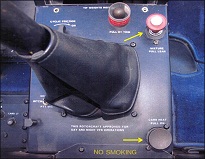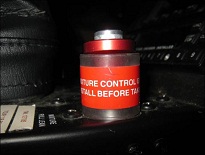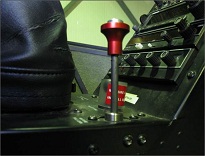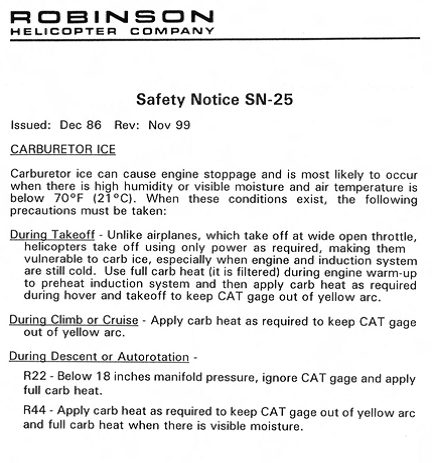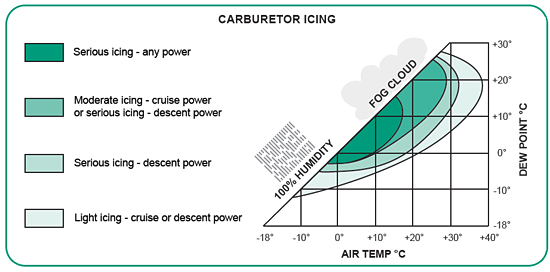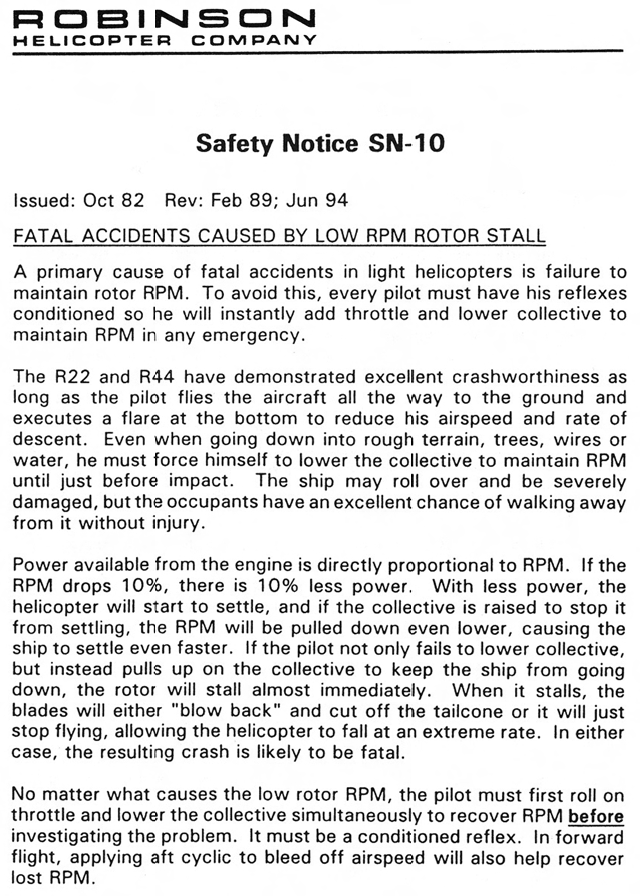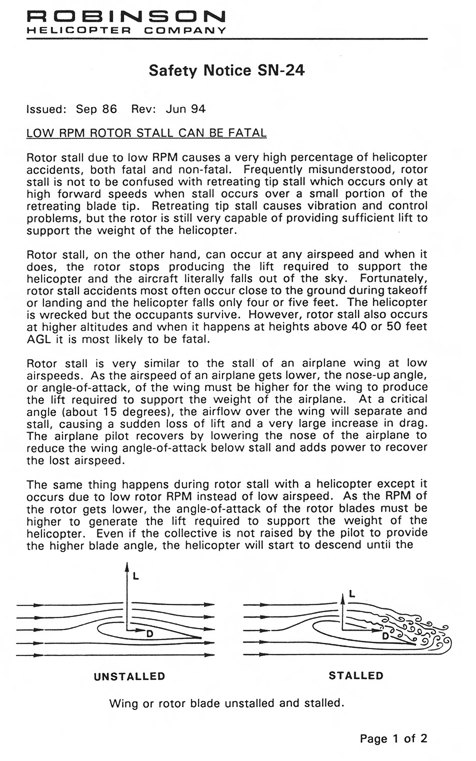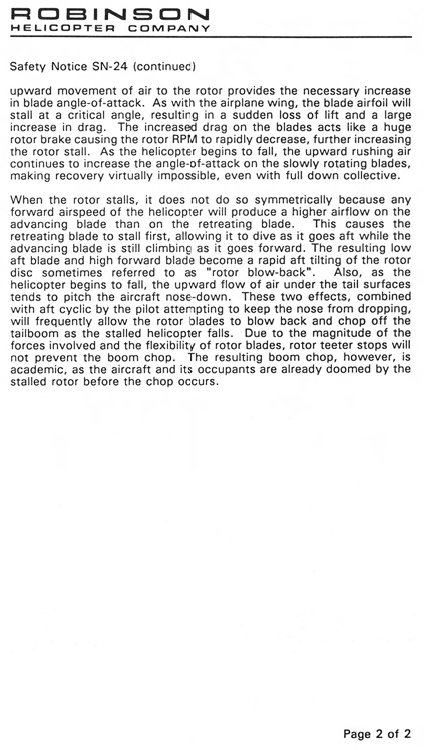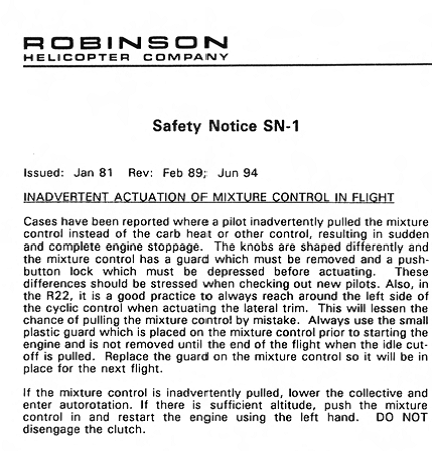Collision with terrain
Great Lakes Helicopter Corp.
Robinson R22 Beta (helicopter) C-GVAR
Region of Waterloo International Airport, Ontario
The Transportation Safety Board of Canada (TSB) investigated this occurrence for the purpose of advancing transportation safety. It is not the function of the Board to assign fault or determine civil or criminal liability. This report is not created for use in the context of legal, disciplinary or other proceedings. See Ownership and use of content. Masculine pronouns and position titles may be used to signify all genders to comply with the Canadian Transportation Accident Investigation and Safety Board Act (S.C. 1989, c. 3).
Summary
The Robinson R22 helicopter (registration C-GVAR, serial number 2110) was departing the Region of Waterloo International Airport, Ontario, for a local training flight with a student and instructor on board. At 1131 Eastern Standard Time, approximately 1 minute after take-off, the helicopter crashed in a drainage swamp on airport property fatally injuring the instructor and seriously injuring the student. The helicopter was destroyed by impact forces; there was no post-impact fire. The emergency locator transmitter did transmit a signal.
Factual information
History of flight
The occurrence flight was to be a basic navigation training exercise in an area extending approximately 28 miles to the southwest of the Region of Waterloo International Airport, Ontario (CYKF). The pre-flight inspection, start-up and engine run-up were completed near the company’s hangar located to the west of the air traffic control tower at CYKF. Buildings obstruct the view from the control tower to the hangar area, so company procedure is to reposition (air taxi) after run-up to a departure area south of the approach path to Runway 08.
After C-GVAR repositioned to the grassy departure area there was a short delay due to tower frequency congestion. During this 5-minute time period the crew decided to practice touchdowns and lift-offs from the hover. At 1130, the air traffic controller instructed C-GVAR to lift off at the crew’s discretion and make a turn around the control tower for a southbound departure (Figure 1).
C-GVAR lifted off from the grassy area with the student pilot in control and proceeded as instructed by the air traffic controller. After reaching approximately 200 feet above ground level (agl), at a typical departure speed, southbound over an area of multiple hangars and overhead wires, the instructor instructed the student to apply carburetor heat. It is not clear whether this instruction was actioned; however, shortly thereafter the engine shuddered, the engine rpm (revolutions per minute) decreased, and the instructor assumed control. The helicopter yawed first to the left then back to the right and began to descend. At 1131, C-GVAR impacted the ground in a level pitch attitude with little forward velocity.
The crash site was a 4-foot deep drainage swamp on the airport’s southern perimeter, approximately 60 feet short of an open field. The helicopter was destroyed. The instructor was fatally injured by the vertical impact force and the student was seriously injured.
Weather information
The weather at CYKF was appropriate for visual flight rules (VFR) flight. The wind was light and variable, visibility was greater than 9 statute miles, ceiling was overcast at 1300 feet agl, temperature was 4°C and the dew point was 1°C. It had rained most of the previous day and at the time of the occurrence the ground, including the grassy area, was very wet.
Flight crew information
Records indicate that the instructor was licensed and qualified in accordance with existing regulations. In addition to the required training, a Robinson Helicopter Company Pilot Safety Course was completed in December 2008, which focused on emergency procedures including autorotation. At the time of the occurrence the instructor had approximately 1040 total flight hours, mostly on Robinson helicopters. The instructor was off duty the preceding 2 days and the occurrence flight was the second flight of the day.
The student pilot had approximately 18 total flight hours, the most recent flight being 1 week earlier.
Helicopter information
Records indicate that C-GVAR was equipped and maintained in accordance with existing regulations. The helicopter had accumulated a total of 5448.5 hours since new. The last inspection was a scheduled 50-hour inspection performed on 01 November 2011 when the helicopter had 5441.6 hours. There were no recorded current or deferred defects at the time of the occurrence. The helicopter was being operated within published weight and balance limitations.
The helicopter was equipped with a Lycoming O320-B2C engine, a 4-cylinder, carbureted, normally aspirated engine producing 160 horse power. The engine controls include a twist grip throttle, fuel mixture control, carburetor heat control, and an RPM governor. The following gauges are installed to monitor engine performance: engine and rotor dual tachometer, manifold pressure gauge, ammeter, oil pressure and temperature, and a carburetor air temperature gauge.
The fuel mixture and carburetor heat controls are located on the centre pedestal in close proximity to each other. To aid in identification, the control knobs are shaped differently. Furthermore, the fuel mixture control knob is red while the carburetor heat control knob is black (Photo 1). To prevent the inadvertent deployment in flight, the manufacturer’s checklist directs the pilot to place a removable cylindrical plastic guard over the mixture control knob before starting the engine (Photo 2). This guard is not to be removed until engine shutdown when the mixture control knob is pulled to the idle cut-off position (Photo 3). This plastic guard is not permanently attached to the control panel.
C-GVAR was not equipped with on-board recorders nor were these required by regulation.
Wreckage examination
The crash site was a drainage swamp on the airport perimeter which had thin wires strung across it in a checkerboard fashion to prevent birds from occupying it. The helicopter’s position amongst the wires indicated a near vertical descent. Most of the damage and deformation to the helicopter was on the bottom surface, consistent with a near vertical impact with little forward velocity. One of the main rotor blades was bent in a fashion consistent with coning, which may have resulted from low rotor rpm in flight or from impact with the water. There was no evidence of rotor mast bumping or main rotor blade contact with the tail boom.
There were no pre-impact mechanical failures or system malfunctions that would have contributed to this accident. A teardown of the engine and accessory gearbox revealed that although they were serviceable, they were not turning at impact. The plastic mixture guard was not found at the crash site. The fuel mixture control was found in the full rich position. The carburetor heat control knob was found in the cold position. Examination of the cable-operated guillotine valve in the carburetor air box confirmed that the carburetor heat was selected to cold prior to impact.
The helicopter was equipped with a Pointer Sentry 4000-10 emergency locator transmitter (serial number 342606), which activated on impact.
Carburetor icing
Carburetor icing is a phenomenon where the temperature of air entering the carburetor is reduced by the effect of fuel vaporization and by the decrease in air pressure caused by the Venturi effect. If water vapor in the air condenses when the carburetor temperature is at or below freezing, ice may form on internal surfaces of the carburetor, including the throttle valve. As ice forms, this increases the Venturi cooling effect due to narrowing of the carburetor throat and this narrowing reduces power output. Unchecked, the ice can quickly lead to a complete engine failure. To overcome carburetor icing aircraft manufacturers provide a system to heat the incoming air and prevent ice accumulation.
Unlike piston-powered aeroplanes, which normally take off at full throttle, helicopters take off using only as much power as required. This partial throttle position makes them more vulnerable to carburetor ice, especially when the engine and induction system are still cold. The Robinson R22 is equipped with a throttle governor which can easily mask carburetor icing by automatically increasing the throttle to maintain engine rpm, which will also result in a constant manifold pressure (Appendix A). To alert pilots to the possibility of carburetor ice, the helicopter is also equipped with a carburetor air temperature (CAT) gauge which displays a yellow arc outlining the range of temperatures to be avoided during possible icing conditions. Robinson R22 pilots are instructed to apply carburetor heat as required to keep the CAT out of the yellow arc during power settings above 18 inches manifold pressure and to apply full carburetor heat at settings below 18 inches (Appendix A and Appendix B).
If significant ice is allowed to develop within the carburetor and full heat is applied to melt it, the resultant water flow through the engine causes the engine to run rough temporarily and to lose further power.Footnote 1
To help determine whether flight conditions are more or less susceptible to carburetor ice, charts based on a knowledge of dry (ambient) air and wet (dew point) air temperatures have been produced (Appendix C). The temperature and dew point at the time of the occurrence when referenced against these charts describe the conditions as the most severe or “Serious Icing – Any Power”. In addition, the likelihood of accumulating ice can be exacerbated by operations in cloud, fog, rain, areas of high humidity, or in this case, ground operations over wet surfaces, especially wet grass.Footnote 2
Low RPM rotor stall
The manufactuer notes that rotor stall due to low RPM causes a very high percentage of light helicopter accidents (Appendix D and Appendix E). This risk is greatest in small helicopters such as the R22 with low main rotor blade inertia. When engine power is lost, the collective must be lowered immediately which induces a rate of descent. If this rate of descent is reduced by raising the collective, the rotor RPM will reduce. If the RPM reduces too much the rotor will stall and no longer provide the lift required to support the helicopter.
Robinson Helicopter Company safety notices
Following a series of accidents and incidents the Robinson Helicopter Company issued safety notices (SN) to its operators to reduce the likelihood of similar accidents. These are published on its website and at the back of the pilot’s operating handbook (POH). Of particular relevance are the following SNs (see appendices):
- SN-01 – Inadvertent Actuation of Mixture Control in Flight
- SN-10 – Fatal Accidents Caused by Low RPM Rotor Stall
- SN-24 - Low RPM Rotor Stall Can Be Fatal
- SN-25 – Carburetor Ice
- SN-31 – Governor Can Mask Carb Ice
Analysis
The helicopter’s engine was not running at impact although there were no mechanical anomalies which would have prevented its operation.
The weather conditions at CYKF were highly conducive to carburetor icing. In addition to the temperature/dew point spread, the operation conducted over the wet grass would have intensified the rate of ice accumulation.
The investigation could not determine whether the carburetor heat control was adjusted as required to keep the CAT out of the yellow arc during the period the helicopter was hovering over the wet grass or during the take-off; however, when the helicopter struck the ground, the carburetor heat was selected to cold. This cold selection may have been the result of not applying carburetor heat, or if it was applied after ice had formed in the carburetor and the immediate result was a rough running engine, the carburetor heat may have been de-selected. In either case the engine likely stopped due to ice blocking the airflow through the carburetor.
An instructor flying with a relatively new student would likely be carefully monitoring the student’s actions, particularly during the critical take-off phase. The possibility that the mixture control was inadvertently selected to idle cut-off was considered to be unlikely as the student would have had to remove the mixture guard, pull the mixture control to idle cut-off and return it to full rich without the instructor’s intervention. In addition, the fact that the carburetor heat, which would have been required given the conditions, was found in the cold position would further suggest that this scenario is unlikely.
At the time the engine failed, the position of the helicopter would have made a successful auto rotation very difficult; it was at low altitude over a group of hangars with multiple overhead wires strung between numerous poles. The closest spot which was free of obstacles was the field 60 feet beyond the crash location.
The quick yawing following the engine failure most likely resulted from torque changes due to the power loss. This yawing would have decreased forward velocity, and increased the angle of descent. In an attempt to decrease the angle of descent and reach the field, the pilot likely raised the collective causing the rotor rpm to decrease to a point which could no longer sustain flight. The helicopter subsequently fell almost vertically into the swamp area short of the field.
Findings
Findings as to causes and contributing factors
- Environmental conditions were conducive to serious carburetor icing. It could not be determined if carburetor heat was applied.
- The helicopter’s engine failed during departure most likely due to ice accumulation in the carburetor.
- The departure path took the helicopter over an area of buildings and obstacles which would have made a successful autorotation difficult.
- The pilot likely raised the collective in an attempt to reach a suitable field causing the rotor rpm to decay to a point which could no longer sustain flight. The helicopter subsequently fell, almost vertically, into the swamp.
This report concludes the Transportation Safety Board's investigation into this occurrence. Consequently, the Board authorized the release of this report on . It was officially released on .

